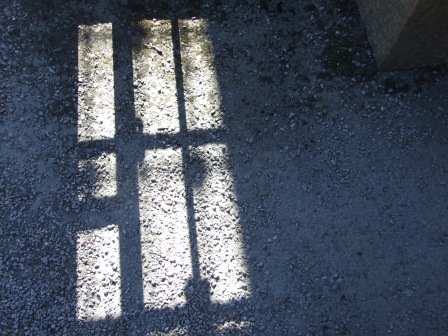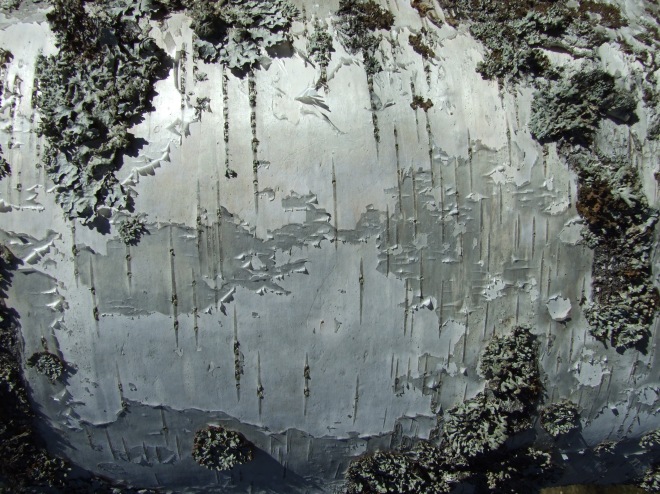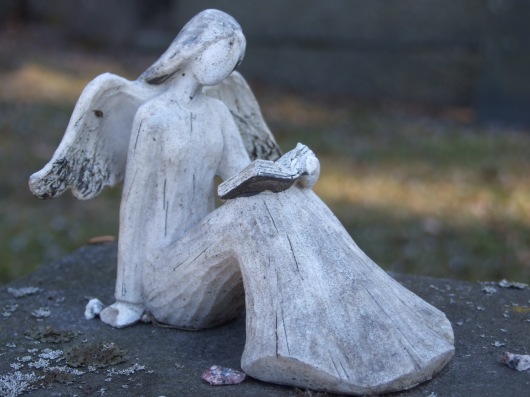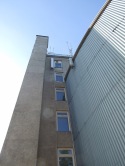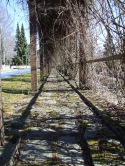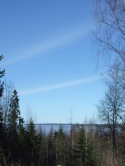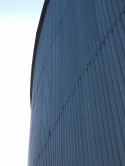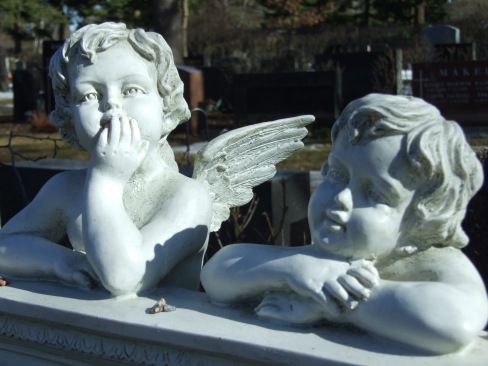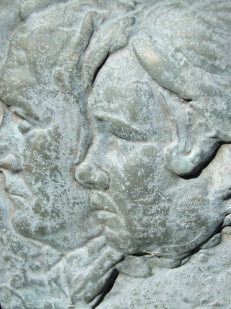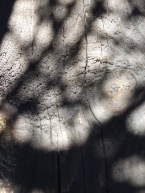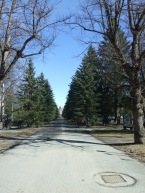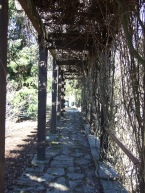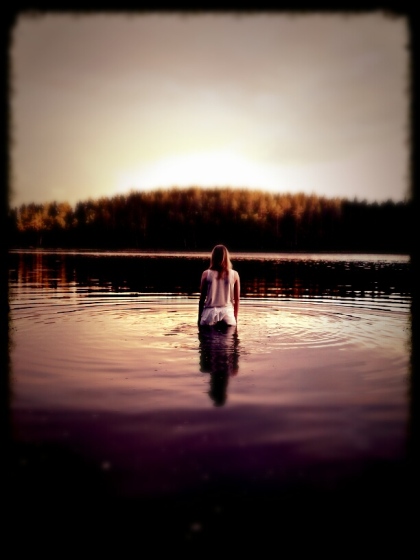
July 2016
Raudan synty/ The Birth of Iron
Yes, I know the birth of iron
I understand the origin of steel
Water is the oldest of brothers
Iron is the youngest of brothers
Here with us the nights come alone
Alone the dawn comes
Alone is born the Maiden of Death
Maiden of Death the Mother of Earth
Alone is born, alone grows
Alone is born, alone grows
At the vast open marshes
swinging in quagmire pendulum
Laid asleep in grass so good
Earth’s girl low maiden
Laid asleep in grass so good
on top of a beautiful heath
forgot her bosom open
forgot her bosom open
and spilled to the ground her milk
thus trickled the white liquid
From bosom so ample
From nipples of the maiden
Where she exuded the black milk
there was the origin of soft iron
Where she oozed the white milk
there was the origin of steel
Where she seeped the red milk
there was the origin pig iron
Wolf ran along the marshes
The bear roamed the isthmus
The marshes rose beneath the wolf
The isthmus at the paws of the bear
There arose the iron
There grew the steel
at the footsteps of the wolf
by the paws of a bear
Will not born iron
without fiery fire
and will not become tough
without immersing into water
Water is the oldest of brothers
Iron is the youngest of brothers
Sonichits.com, Veera Voima: Raudan synty [Online] https://sonichits.com/video/Veera_Voima/Raudan_synty [Accessed 8 July 2016]
Starting point 08.07.2016
Before I start to write about my final project, my background study for this project, my objectives and also about the actual process of making my screendance film I want to present the final outcome of my project which is a short screendance film called MamiWata in which I explore movement through lyrics and environment.
My film is a site-specific or to be more exact a site-responsive dance film about Scandinavian mythology, water and nature. MamiWata (Mother Water) itself means water spirit and it is the name for water deity which is celebrated throughout much of Africa and the African Atlantic. It is often portrayed as a mermaid, a snake charmer, or a combination of both. She is widely believed to have “overseas” origins, and her depictions have been profoundly influenced by representations of ancient, indigenous African water spirits, European mermaids, Hindu gods and goddesses, and Christian and Muslim saints (Africa.si.edu, Arts for Water Spirits in Africa and Its Diasporas [Online]. Available from: https://africa.si.edu/exhibits/mamiwata/intro.html [Accessed 7 August 2016]).
In Scandinavian mythology there are also stories and myths about water spirits and beliefs how people have seen those spirits. It was told that water spirits were capable to move above the ground and amongst people by taking for example a human or an animal form. These spirits had different kind of names (Näck, Hiisi, Ahti) and by knowing its name and by saying its name loud was sending these spirits back to water where they were assumed to live and belong to. People were afraid of these creatures and they highly appreciated them (Kvideland, R. and Sehmsdorf, H.K. 2010: 252-259).
In my film my character is going back to that place it belongs to. It is a journey from captivity to freedom and a journey from dry land into water. The story is not following a certain myth but it is mixing these Scandinavian myths about water and people‘s beliefs about these water spirits. In this film I explored my own roots and my relation ship with nature and water through movement.
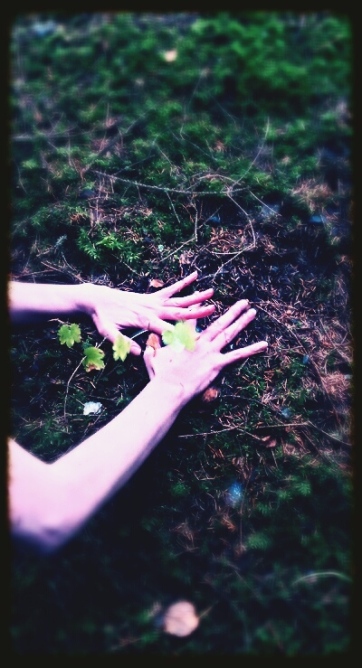
My background
I have always been interested in narratives, fictions and fairytales. When I was a little child my mother used to tell fairytales, which were written by famous authors like Hans Christian Andersen(Denmark) and Grimm Brothers (Jacob and Wilhelm Grimm, German) to me and my brothers. Those stories intrigued me by nourishing my imagination and by feeding my creativity as a child. It was also a way to escape the reality and a way to concentrate to listen those fairytales which were told by my mother. Those reading sessions were important part of my childhood and in a way those moments combined me, my mother and my siblings. Ever since I have been fascinated about fantasy, myths and beliefs.
Telling and listening stories is a social phenomenon that combines people all around the world. These myths and beliefs can affect on people’s customs and policies. Fiction can, for example, function as an adult way to try to get children to believe in them for pedagogical reasons. A good example of this kind of behaviour could be parents way to scare their children about non-existed and supernatural beings in order to keep their children away from harm (Kvideland, R. and Sehmsdorf, H.K. 2010: 20-21).
I believe that fairytales and especially different kind of myths and beliefs are telling something about human nature, our society and also something about values in different cultures. It is a talent to tell a story and also a talent to listen a story. If you catch a good story you want to hear more. You want to nourish your appetite to be surprised and to be excited.
Remembering my childhood and thinking about those experiences I had in my past in reference to those shared moments with my mother I started to think about myself, my personality and things that I have been chosen in my life. I thought about what kind of decisions I have made during my life and how my decisions have affected on me as a person. I found out that I have always been interested in telling stories through movement. I am not only interested in abstract movement. I would like to learn more about story telling in order to make contemporary dance movement vocabulary more achievable for those people who usually do not come to see contemporary dance performances because they find those performances too hard to understand.
Exploring my roots and my personal history led me to my home country, Finland. I thought about those environments and places where I have lived during my life. I tried to find some kind of uniting cause or element and finally I found the one. The uniting element for myself was water and the biodiversity of Finnish nature. I have always lived near water and it is commonly known that Finland is the Land of a Thousand lakes. Finland is also known out of its clean nature. This project is a journey back to my roots and also an exploration to resources of myself (VisitFinland.com, Land of a thousand lakes. [Online]. Available from: http://www.visitfinland.com/article/the-water-of-life/ [Accessed 16 August 2016]).
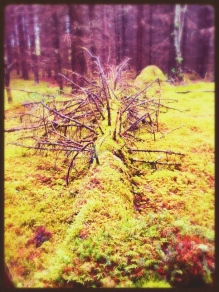
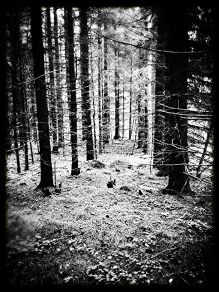
Objectives
What is the purpose of my project?
Before I embarked my thesis work and before I started to explore my theme, which in my case is water and nature in Finnish mythology, I decided that I want to learn more about Scandinavian folklore, folk beliefs and rural oral traditions. In my case I will concentrate on Finnish folklore and myths that are related to water and nature (Kvideland, R. and Sehmsdorf, H.K. 2010: 3).
I will also explore water as one of the elements. It is exciting to learn more about how water affects on movement and how does it leads my choreographic decision-making. I would also like to know more about how the camera and especially how the action camera called Turnigy is working in wet conditions and also under water. I want to know does it bring any extra value to my project and what kind of effect it brings into my work especially when exploring water as an element.
My project is also a possibility for myself to learn more about myself and more about my personal roots. It is a dive into my personal history and it tells something about my way of appreciating nature and its biological diversity. I want to expand my knowledge and notion about site-specific dance performance and to continue my journey into site-responsive dance. Working with natural environment is a way to study more about how I am responding and experiencing space.
Although I am doing a solo project and not collaborating with other practitioners I find that I am communicating and responding impulses that certain environments provide. It is a way to activate my imagination and to deepen my relationship with space and environment. It is intriguing to examine for example how my own mood and alertness, topography, weather conditions and temperature affect on me when performing or practicing outside.
Finally, I would like to explore how choreographed movement behave when it is taken outside from studio environment. One of my aim is also to study how I can use words and lyrics to make choreography and how much music itself affects on choreographic process.
Planning my project
Initial plan
The actual process and the preparation for my project started at the beginning of July 2016 when I started to outline my project. My initial plan was to make a site-specific screendance film about loneliness as a social phenomenon and the other theme was water. I soon realised that it was too much for myself to deal with these two themes and I decided to make some changes to my plans.
My original idea was to make a screendance film based on interviews about loneliness and my plan was to use those interviews as a foundation for my potential choreography. I realised that I did not have enough time or recourses to make and to analyse those interviews. It should have been a hard thing to do because usually in Finland July is a holiday season and it is said that whole Finland is closed during that month. It means that it is hard to reach people to be part of the projects. When I realised that I decided to leave my initial idea and concentrate on exploring my other existing theme. That theme was water.
Main themes
Water and Finnish nature
Finland is considered as a land of a thousand lakes and Finland is also well-known of the purity of its nature. When you browse different kind of travel guides and brochures about Finland you can find out that those guides describe Finland as a place where the water is clean and where protecting waters is a national concern. It is also said that Finns feel a certain closeness to the element of water and it is a source of livelihood for many people in Finland (VisitFinland.com, Land of a thousand lakes [Online]. Available from: http://www.visitfinland.com/article/the-water-of-life/ [Accessed 16 August 2016]).
We people are dependent on water. We need water for living but at the same time it can be extremely destructive element that can swipe human life out of this earth when thinking about floods, tsunamis and other natural disasters that it causes. Water is an important element when we are thinking about humankind, humanity and life. It is an element that supports life and it is significant when thinking about human being’s survival. It is also a driving force behind life and growth. Human has concurred seas and oceans and also visited space but there are still places and abysses in Earths oceans that have not been discovered yet. It is a foreign territory that appeals, amazes and also frightens us.
In my film I used music that was composed by Finnish folk musician called Veera Voima and I found a song called Raudan synty/The Birth of Iron which is based on a poem from the Finnish national epic called Kalevala. The song was performed by a folk music group called Suden aika/ The Time of the Wolf and the song was from their album called Laiturilla.
When I listened the lyrics of this particular song, it was taken me back to my youth when me and my family lived in Eastern Finland in a little village called Varpanen. From my opinion, it was extremely remote village when we moved there and I thought that it was in the middle of nowhere. I took that place for granted and I did not appreciate the beauty of that place until I was an adult. By going back to those days when I was a youngster was a starting point for me to use Varpanen and nearby forest areas and lakes as a scenery for my film. I wanted to go back to my roots and also give a value to that place and nature which have affected on me.
For me nature itself is a place where I go to find peace and tranquillity. It is a place where I go to calm myself. It brings me closer to myself and it is a way of release anxiety and tress. When I started my thesis project it was obvious for me to work with different kind of sites and places. First, I started to think about my own interests and in what kind of natural environments I would like to work at.
By listening the song, I felt myself attached to the lyrics of this song and by listening it over and over again I decided that I will use these lyrics as a base for my choreography and as a reason to choose sites for my project. In a next chapter I will tell more about these sites and about those reasons why I chose those places.
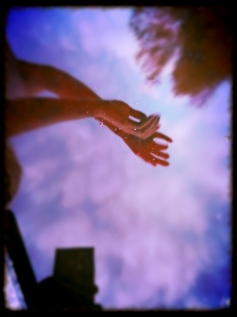
Seven different sites
- Cabin in the woods
- Three different lakes: Lake Varpanen, Lake Hietanen and Lake Ala-Kuomio
- Bog
- Two different woodland areas: dry woodland area and fir forest
In a book called Making Video Dance: a step-by step guide to creating dance for screen, practitioner and award-winning director Katrina McPherson says that spaces, and how you choose to present them on screen affect how the viewers interpret what they are seeing. She also argues that environment brings with it certain resonances and even quite specific associations. Because of that it is therefore vital to think where to film your completed video dance work and she advices you to begin to imagine what your video dance is going to look like before you decide in what sort of environment it will be filmed (McPherson, K. 2006: 64).
One of my ideas was to film in a Lake Hietanen, Lake Ala-Kuomio and Lake Varpanen which are located near each other. The first image I had in my head was the image of underwater images and I chose those lakes because they were familiar to me and because I had an insight that water in those lakes was clear. Usually the water in Finnish lakes is bit muddy and murky.
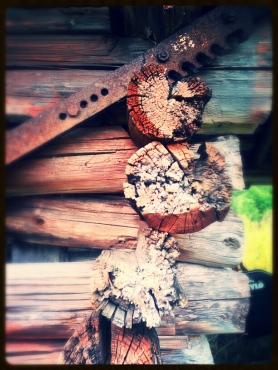
Secondly, I wanted to add more environments into my film. I wanted to introduce Finnish nature and I decided to present coniferous woods and the diversity of it. I decided to film in two forest areas near those lakes I mentioned at the beginning of this chapter.
Thirdly, I remembered that my youngest brother had introduced me an abandoned cabin near my parent‘s home in Varpanen about a year ago. The reason to choose this place was because I wanted to add a remote and abandoned element in to my film. For me this cabin represents the beginning of a journey for my character in my short dance film. Because my film is also loosely based on Scandinavian myths about water I wanted to use Scandinavian mythology to create my character and to tell this abstract story behind my film.
Finally, the reason why I chose the bog to be one of my sites was also because of my character‘s journey. I wanted my character‘s journey to begin from the dry land and to end into water. I also chose this bog near my family‘s summer place because I wanted to show environment that is a passage into water. It is a place that is related to water because of its humid nature and usually in Finland especially in Eastern Finland there are bogs that run into lakes.
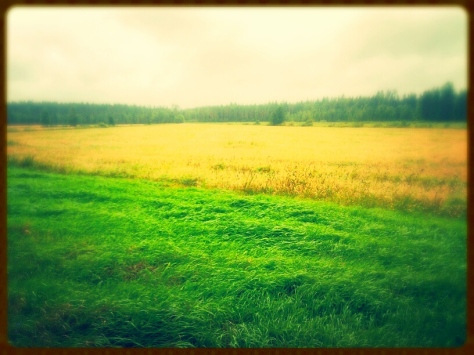
The meaning of site
Practitioner Katarina McPherson finds that one of the great challenges of filming dance on location is to have the choreography interact with the space. She also says that there are techniques you can try to integrate the element. For example, when you are working in a certain space she suggests that instead of pushing props out to the edges, try pulling things into the centre, thereby forcing the choreography and the location together. When dancers are moving around and through, and even touch objects, it will create a feeling that dancer‘s actions belong in the location (McPherson, K. 2006:68).
For me site is a companion that enables me to explore movement and also space. It is not just a backdrop for my movement. It is a tool that allows me to play with my creativity and it nourish my enthusiasm to study the interconnection and interaction between me and space. Before I start to plan my storyboard and even before I start to plan choreography I usually spend time in a certain site and I let the environment and the atmosphere of that environment affect on me. It is like a spiritual experience that helps me to feel more connected to space and environment. It helps me to be more aware and alive in this particular moment. It is a way to be more truthful to myself and a way to find my own voice as an artist.
During the time when I was filming material for my short screendance film called MamiWata I spent a lot of time in different outdoor locations. Every of those locations were different from each other and it was intriguing how different locations affect on me and on choreography. There were also parts that were choreographed especially for this project. Although some of the material was choreographed, I wanted to give some space for a certain location to affect on my movement. I was touching and feeling and also using all of my senses to interact with environment. Because of the amount of stimulus around me I used a lot of touching and seeing things to really get the sense of my surroundings without doing compromises with the choreography.
For me it is really important to be open when you approach or interact with a certain environment. It gives me time to play and explore. It is a way to look movement and space from different angle and perspective. For me it is an opportunity to deepen my self-awareness and look behind the space.
Work in natural environment
American contemporary dance practitioner and pioneer Anna Halprin‘s work is based on three beliefs. She believes that ‘ the human body is a microcosm of the earth ‘, processes of nature offer aesthetic guidelines and nature is a healer. She emphasizes the physicality of response when working outside and the importance of heightening awareness through opening up the senses and ‘isolating them so that you can focus on what’s there’ (Worth, L. and Poynor, H. 2004: 32).
When I started to do choreography to my short film called MamiWata I had already read about Anna Halprin and about her principles. When I first read about Halprin I was fascinated about the way she has approach movement and choreography. I felt that I had found an artist or a person who shares same kind of ideas about work in natural environment that I have had in my head for many years. Exploring Halprin’s work and art was encouraging. I knew that I wanted to know and study more about work in natural environment. It was a starting point for myself to study movement and choreography outside the dance studio.
Natural environment makes you feel small but at the same time it makes you feel that you are part of this planet and part of our cosmos. It helps me to keep my feet on the ground and I feel myself more grounded and more down to earth. Natural environment and especially nature intrigues me and I would like to spend more time exploring and studying more about natural elements such as water and air.
Choreographic process. Using choreographed material and improvisation
I started my choreographic process at the beginning of July 2016. I thought that I will use improvisation but I also decided that I will do choreography for my film. First, I started to gather material and exercises that I can use as a base for my choreography. I went through materials that I have used in my earlier projects but I soon found out that those exercises did not work for this particular project. When I realised that I thought that maybe I just improvise and film that but it did not work either. I almost skipped the idea of using my own choreographed material but then suddenly I got an idea: How about using the lyrics of the song I was using in my film as a base for my movement? After that discovery, using lyrics became a focal point of my choreography.
When I worked with the lyrics I was using movement symbols that represented each word of this folksong. For example, if I had a word ‘yes‘ I created a movement for it and every time where there in the lyrics was a word ‘yes‘ I repeated that movement. Creating a movement symbol for every word of this song I created a movement sequence that was reproducible. In a way I created my own sign language for this project and used lyrics because I wanted to concentrate to the written text.
During the time I spent at the dance studio I was a little bit sceptic about the material that I was creating. I wondered how this material will work on a natural location but I also decided that I let the environment to affect on my movement. By allowing that I was giving a chance for myself and environment to communicate.
The choreographed material that we can see in my film is a reflection or an interpretation of that choreography that I invented at the studio. Choreographed material helped me to improvise and it was exciting to discover how much site itself affects on movement. It was also intriguing how much space itself affects on me as a performer and how does it help me to create different kind of atmospheres. Especially when I was working with water.
Emotions
I can not ignore emotions when I am talking about atmosphere and how space affects on me as a performer. Practitioner Kent De Spain argues that it is hard to imagine improvisation completely devoid of emotion, but it is rare to see improvisers working with emotion in any range or depth. He sees that emotions are there if we want them. He says that he knows emotions because he feels them in himself and has felt them before, and such states can be triggered by all sorts of things: from physical changes to images to interaction with others to intellectual choices (De Spain, K. 2014: 142-143).
For me performing is a thing that helps me to deal with my emotions. Because of my personality as an emotional and sensitive person I can not avoid emotions to be part of me when performing and exploring movement. It is not therapy for me but it helps me to be open and present. Dealing with emotions also helps me to be me and they give me a feeling that I am engaged to movement and space. Following my emotions assist me to be more truthful to myself and I would like to share these emotions with my audience.
De Spain also sees that improvisation is not therapy for him. He sees that improvisation allows us to put a frame around emotions, to give it shape and context. He wants his improvisation and his experiences on stage to touch his audience‘s experiences in a more meaningful way, a more human way, and sometimes our emotions are as human as we get (De Spain, K. 2014: 150).
Working with the element
Finally, I would like to say something about working with water. Water has always been an element that has fascinated me but also frightened me. It was obvious from the very beginning of my project that I want to explore this element. I was eager to learn more about moving and filming under water. During filming I realised that it was a bit hard to concentrate to do the actual filming and performing at the same time. I got help from my brother and my partner helped me to do the filming but I was a bit overwhelmed about the amount of work I had. Although it was rewarding and thrilling.
I really enjoyed working with water and I learned that there are always certain kind of risks. It was also interesting to find out that it is hard to practice those things beforehand you plan to do in water. Water brings obstacles and also opportunities and because of that I used the action camera called Turnigy for filming under water. Filming under water was possible with Turnigy because you can put the camera into waterproof case that protects the camera. By using Turnigy helped me to play with the element and movement. Every time when I went into water and started to film I felt different. I really enjoyed the play with water and in the future I would like to continue my exploration with this element and study more about how does it affects on movement.
About music and sounds
Before I even started my project I already had a musician in my head with whom I wanted to work with. The folk song that is in my film is called Raudan synty/ The Birth of Iron and it is composed by Finnish folk musician, singer and teacher Veera Voima. The song is performed by a folk music group called Suden aika/ The Time of the Wolf and it is from their album called Laiturilla. The reason why I decided to use this song was because it‘s quite organic song and it represents Finnish folk tradition which I wanted to interpret in MamiWata.
Raudan synty/ The Birth of Iron is based on a poem that can be found from Kalevala. Kalevala is the Finnish national epic which is edited and completed by Elias Lönnrot on the basis of the epic folk poems he had collected in Finland and Karelia. The first edition of the Kalevala appeared in 1835. It introduces this poetic song tradition, archaic trochaic tetrametre, which had been part of the oral tradition among speakers of Balto-Finnic languages for two thousand years. The poem that is used to create the actual song is the ninth poem of Kalevala (Finnish Literature Society, Kalevala [Online]. Available from: http://neba.finlit.fi/kalevala/index.php?m=154&l=2 [Accessed 8 August 2016]).
First time when I listened this song I was getting quite emotional and I really enjoyed the way this song was composed. I like the idea that there are only few instruments and the main emphasis is on singing. I admire how the singers are using their voices to create this mystical atmosphere around this song. For me this song is like some kind of spell or conjuring. It helped me to do choreography and to improvise and I felt that it affected on my work in a positive way.
Sonichits.com, Veera Voima: Raudan synty [Online] https://sonichits.com/video/Veera_Voima/Raudan_synty [Accessed 8 July 2016]
Challenges
During this process I felt myself a little bit lonely and small. I had some doubts about my abilities to create material that would be interesting or meaningful especially for myself but I think that those kind of moments when you feel yourself uncertain and weak are important when thinking about my own growth as an artist. You have to learn to deal with those kind of feelings and emotions. I think that if you want to learn or to discover something new, you have to come out of your comfort zone. You have to take that risk that everything goes wrong and you should always stand behind your decisions. Sometime a mistake can be an opportunity.
Secondly, I think that the actual making of my film was really exhausting because I did everything from choreography to editing by myself. I got help from my partner and also from my brother to film the whole short film but I realised that in the future I should collaborate with other practitioners in order to give myself more time to concentrate for example to make choreography or to film my work.
Finally, I have to say something about those locations and environments I decided to use. In the future I think that it would be wise to choose only one or couple of sites to film at. Then I would have more time to concentrate to actual interaction between me and environment and it would give me more time to spend time in a certain environment. I also learned that you should spend more time testing those movement ideas in a particular site and always remember to assess risks beforehand in order to avoid accidents to happen.

Future plans
My future plan is to continue my journey as a dance artist who wants to learn and study more about film making. I see film making as an opportunity to explore and expand my knowledge and insights about dance and making choreography. During my MA Dance studies at Bath Spa University I realised that I should give more respect for myself and I should believe in myself and my abilities as an artist. During my studies I started a journey that will continue in the future.
I still have a lot to learn and I would like to know more about the way how to tell narratives and how to give a voice to ordinary people like you and me. I want to find ways to touch people, their emotions and interact with them through movement and through narratives behind people.
Bibliography
Africa.si.edu Arts for Water Spirits in Africa and Its Diasporas [Online] https://africa.si.edu/exhibits/mamiwata/intro.html [Accessed 7 August 2016]
De Spain, K. (2014) Landscape of the now: a topography of movement improvisation. New York: Oxford University Press.
Finnish Literature Society, Kalevala [Online]Available: http://neba.finlit.fi/kalevala/index.php?m=162&l=2 [Accessed 8 August 2016].
Korte, I. (2007) Samaanin sampo. Espoo: Nemora Kustannus.
Kvideland, R. and Sehmsdorf, H.K. (2010) Scandinavian Folk Beliefs and Legend. Minneapolis: The University of Minnesota Press.
McPherson Katrina (2006) Making video dance: a step by step guide to creating dance for the screen. Oxon: Routledge.
Sonichits.com Veera Voima, Raudan synty [Online] https://sonichits.com/video/Veera_Voima/Raudan_synty [Accessed 8 July 2016].
VisitFinland.com, Land of the thousand lakes [Online] http://www.visitfinland.com/article/the-water-of-life/ [Accessed 16 August 2016].
Worth, L. and Poynor, H. (2004) Anna Halprin. Oxon: Routledge.













